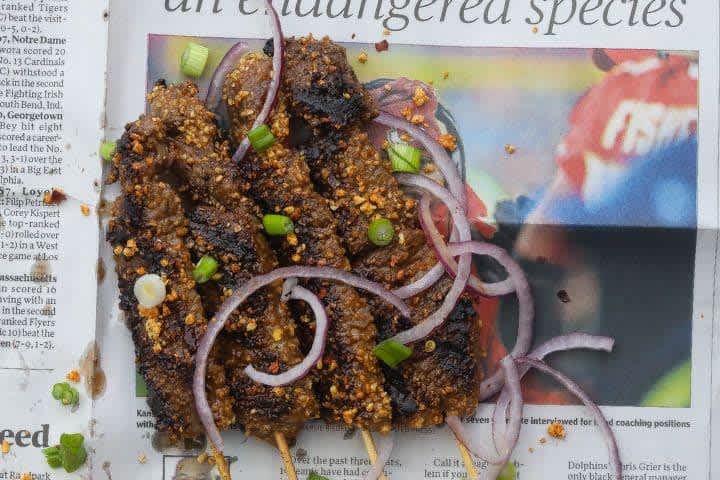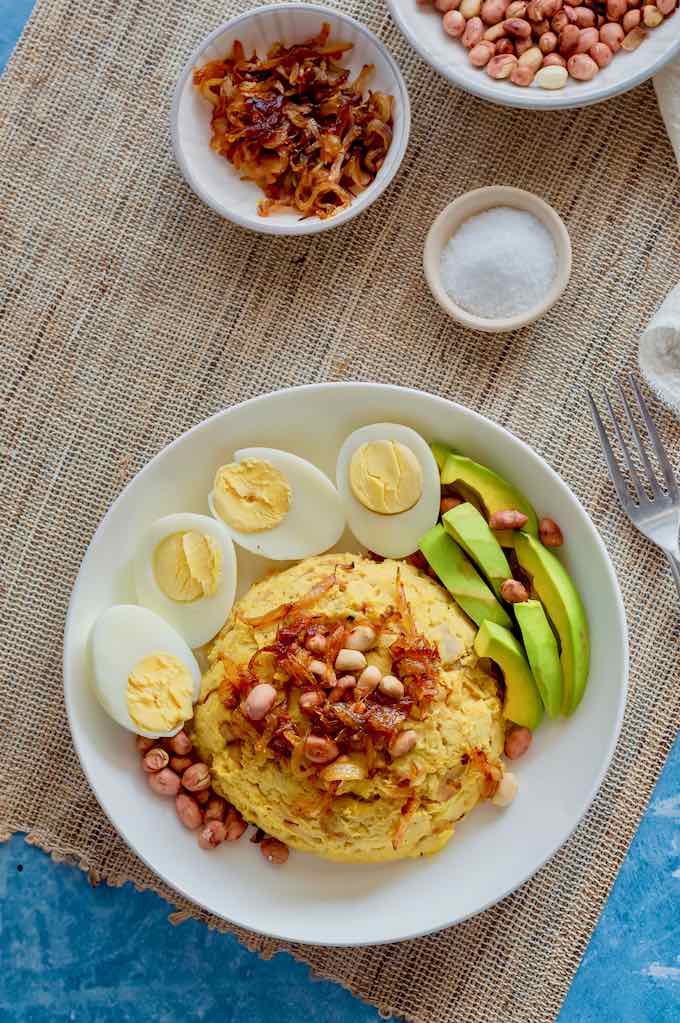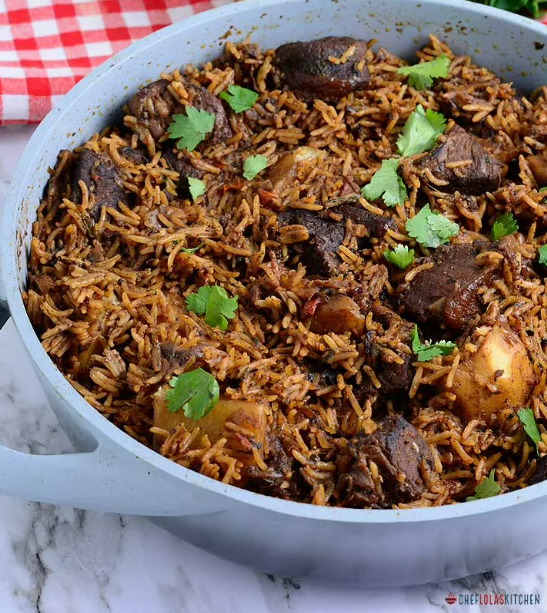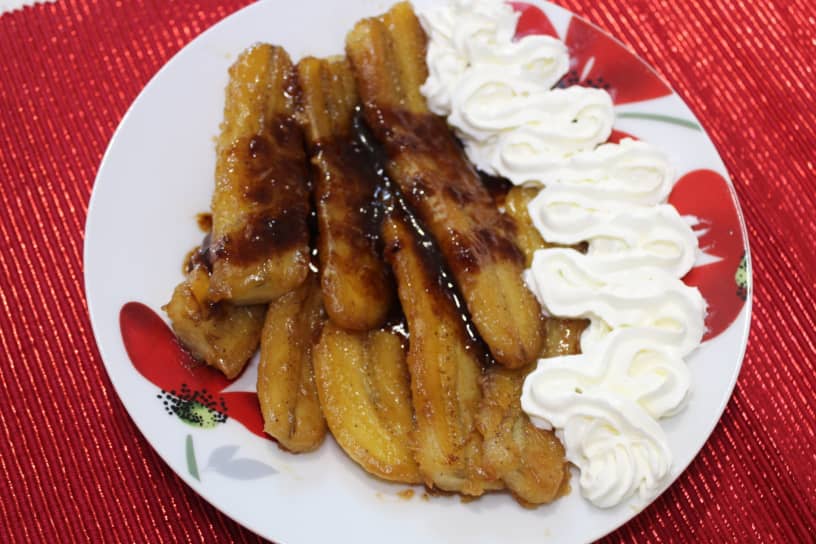Registered Dietitian Mercy Bello has picked out some of her favourite recipes that represent the Afro-Caribbean nations in the Commonwealth, which were shared as part of the Cook the Commonwealth project this summer.
We asked Mercy to pick out a starter, two mains and a dessert that represent and celebrate diversity in food. Plus, we've shared the Cook the Commonwealth recipes so you can re-create them yourself! Tag us on social with your attempts.
Starter: Suya (Nigeria)

This meat recipe is well marinated in a combination of spices that makes it taste unique. It is ideal served as a starter beside some raw sliced tomatoes and onions which complements its delicious taste. It is grilled making and that makes it a heart healthy alternative to fried meat. Suya can be adaptable by making it in the oven, air fryer using any meat, chicken, offal or fish. I love to eat suya!
History
Suya is believed to have originated from northern Nigeria, a part of Nigeria with a long-standing tradition in meat preparation such as Suya (also called Tsire), Dambu, Kilishi to Balangu, these speciality meats are a delight to the palates. However, the term Suya which means fried skewered meat, is the umbrella name for all the meat products from northern Nigeria. Though it means to ‘fry’, the meat is actually allowed to fry in its own fat during grilling as opposed to frying it in oil. Some of the meat recipes are well dried and that makes them last for very long without any refrigeration.
It is boneless, grilled meat; dredged in yaji, commonly skewered and grilled. Small pieces of meat – commonly beef, chicken – and offal, are dredged in yaji (a combination of dried spices with peanut powder) and flame-grilled over open coals till cooked through. In most parts, the suya is warmed again over coals prior to serving. This twice-heated method intensifies the smoky flavours creating a gorgeous, nutty, meaty outcome.
Story of suya (from Bukas and Joints)
Once upon a time, there were Hausa cattle herders that travelled all over the country for trade and green pastures for their herd. It is thought that at night they would sit around campfires resting from their travels, grilling meat skewered on bamboo if they could find any, or using their daggers or swords as a skewer. These travelling herders were nomads by nature and I bet the towns they visited loved the smell and taste of this delicacy (who wouldn’t?) Seeing the commercial value, the herdsmen refused to divulge the secret recipe of their yaji but instead left one of their compatriots to tend to their new converts.
And that’s how the popularity of suya spread far and wide all over the world; even Jamie Oliver has his own spin of the Nigerian suya. There is no neighbourhood in Nigeria without its resident Mai Suya (who is always definitely a Northerner!), this spicy snack has become a national treasure. Nigerians in diasporas will tell you one of the things they miss most is a good juicy stick of suya: it is the smell of home.
References
Kitchen Butterfly, The Arewa Kitchen: Specialty Meats (or Suya Plus), February 20, 2017.
Image: Food Fidelity
Main: Etor (Ghana)

Etor is made using nutritious ingredients: easy preparation, the elegance of the meal, easily adaptable, healthy fats, heart healthy. Peanuts allergy may be prevented by swapping peanuts for cashew nuts, pistachios, pecans or walnuts as appropriate.
History
Yam and eggs play a significant role in the culture of Ghana. The dish Etor is named by the Akans and Gas of Ghana. Since Etor is a dish of mashed tubers or plantain and served with eggs, it is almost a must in many traditional ceremonies such as weddings, thanksgivings, twin festivals of the Ga-Adangbe people (served to the twins for being twins), and puberty rites celebrations for those who have reached adulthood (served to girls). The eggs in the dish are a symbol of fertility. Some communities see Etor as the breakfast of the brides as they think that the eggs which symbolise fertility will help prepare the bride's womb for conception. Etor is usually served to appease the gods because the meal is considered sacred.
References
Image: 196 Flavors
Main: East African Pilau

Rice is my favourite food and seeing that this recipe uses a variety of spices and ingredients to produce a delightfully fragrant rice dish, made it an easy choice on my list.
It can also benefit from a variety of vegetables to increase the fibre content and therefore make it ideal for weight and diabetes management. It is easy to put together and can be made ahead during meal prep, plus it is a one pot dish.
History
Pilau is a one pot rice dish popularly known in East African countries such as Kenya. It features a variety of spices that makes it unique in aroma. When you think of Jollof rice in West Africa, Pilau is the East African version. However, the two meals are not the same and the Indian spices used in East Africa make this dish distinctively different from Jollof rice. Pilau is much more comparable to the Somali bariis iskukaris.
Pilau is vividly present in every celebration across East Africa. The term “Pilaf” is named due to the technique of cooking rice which uses seasoned broth. This technique originated in the Middle East and gradually became known in neighbouring countries and throughout the world today. It is also called pilaf, pilau or pilaw in other parts of the world.
Some pilau recipes will often include bay leaves, saffron, ground coriander seed, and turmeric. However, Tanzanian pilau recipes often use five distinct spices to make the pilau masala: black peppercorns, cloves, cumin, cardamom, and cinnamon. Spices, especially cloves, are used more generously in Tanzania. In the Horn of Africa, cardamom is much more popular. Though cooked in different ways, the aromatic spices used in pilau is what sets it apart from other rice dishes across the world.
Reference
Image: Chef Lola's Kitchen
Dessert: Caribbean Banana

This banana split dessert is made using natural food (banana). The sweetness comes from the banana itself and then intensified with some natural sweetener and spices. It has a hint of tanginess from the rum and lemon, paired very well with cold ice cream. I also chose it because it is a good source of potassium and vitamin B6. It is a very delicious and nutritious natural food dessert.
History: Rum
This dessert truly represents Caribbean cultures due to the inclusion of rum in the recipe. Rum, a by-product of sugar processing, was first distilled by African slaves in Barbados in the 1600s. Until now, rum has remained an important part of the Caribbean.
The history of sugar, and its by-products like rum, is intertwined with the history of the Caribbeans whose main survival depended on sugar cane plantations, until Christopher Columbus, a Spanish explorer, introduced sugar cane to the island of Hispaniola, leading to more plantations and the slave trade.
The economic trade of sugar, which was then known as the white gold by British Columbia, gradually spread to other areas such as Puerto Rico, Barbados and the Caribbean Islands. The English who arrived in the Caribbean discovered the by-products of sugar processing, such as rum, and soon began to exchange trade with the American colonies for timber, beef, salted fish, pork and other livestock. Several Caribbean recipes benefit from the flavour of rum including cocktails and cakes.
References
Ursula Petula Barzey, Learn Caribbean History By Visiting Rum Distilleries, 18 December 2014




